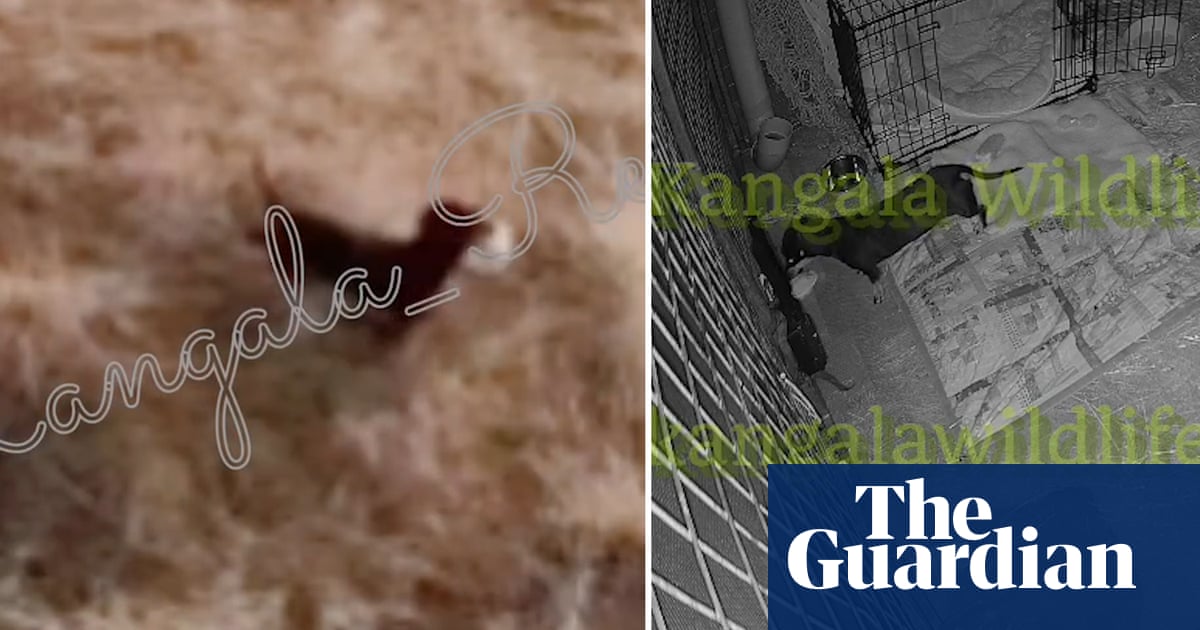When Do Ho Suh was a young boy in Seoul in the 1970s, his father decided to build a family home based on a hanok – a traditional Korean timber house with a curved tiled roof. The one he chose as his model stood in the gardens of the imperial palace and had been built for King Sunjo in 1878.
“My father was a painter who had modernised Korean art,” says Suh, “but, as the country was rapidly moving towards westernisation, he became obsessed with the idea that he could live like a scholar from an older time. For him, it was a way to preserve certain traditional virtues and practices that were fast disappearing.”
For several years, his father, Suh Se-ok, collected salvaged timbers from traditional buildings that had been dismantled. He also tracked down a small group of traditional artisans who possessed the knowledge and skills to construct the house according to age-old principles and techniques. “One of them was an old master carpenter, who had actually built several houses in the palace complex,” Suh tells me. “When my father contacted him, he had a job repairing people’s doors.”
Suh visited the construction site almost daily as the house slowly took shape over six years. “It was like my playground,” he says, smiling. More vivid still is his memory of the day that he went with his father to the original house in the palace gardens, where the master carpenter made measurements for the design of the new one. “What was truly astonishing was that he only made two,” Suh tells me, still sounding awed. “I don’t know how he did it, but he was able to calculate all the other dimensions in his head from those two measurements. Then, when it finally came to the actual day that the structure was erected, everything fitted together perfectly.”
If our formative experiences shape our lives, Suh’s creative trajectory must surely be rooted in his childhood sense of wonder as he watched the slow, meticulous construction of the building that would become his family home, its walls, roof and rooms replicating the interiors and dimensions of the royal hanok that had been built 100 years earlier.

Having left South Korea for New York in 1991, Suh has since become an internationally renowned artist whose primary subject is home – a place and a state of mind that he explores in drawings, sculptures and video pieces, but most hauntingly in the creation of shimmering fabric architectural reconstructions of the houses he has lived in over the years in Seoul, New York and London.
“You find the everyday and the universal in Suh’s art, in his enduring consideration of home, both as a physical space and as something lived,” says his London gallerist, Victoria Miro. “His works can be ephemeral, but they are underpinned by profound thought. They come from places imbued with personal meaning and allow us all to connect with ideas of home and life as a journey.”
Made from semi-transparent nylon mesh, Suh’s lifesize collapsible structures were patiently stitched together with the help of traditional seamstresses recruited by his mother, Min-za Chung. The results are both meticulous in their replicated detail – door knobs, light switches, even the faint traces of marks left by nails and screws – and otherworldly in their almost ghostly translucence and muted colours. Fragile and semi-transparent, they speak of belonging, displacement, identity, longing and embedded memories.
“For me, memory is central to what I do,” Suh says. “We bring our memories with us when we move and my memories inhabit the architectural pieces that I create, which are physical, but also psychological and metaphorical. What I bring is a skin, the thin skin of the bigger physical thing. The idea to use the semi-translucent fabric came about when I was trying to find a way to realise the intangible quality of memory. The material is fragile like our memories and it also has that haziness that many people associate with the past.”
In a few weeks’ time, an installation of Suh’s work will occupy Tate Modern’s concourse, a challenge that, as we speak, is occupying a lot of his thinking time. “It’s odd to put them all in a white cube because many are site-specific,” he says. “And around 70% of the pieces are new, so it’s not really accurate to call it a survey show. In a way, this exhibition is more about how I want to show the work, rather than what work I want to show.”
The exhibition title is Walk the House, a reference to an old and now seldom-used Korean colloquialism. “It’s something I heard the old master carpenter say many times and it has stayed in my consciousness,” Suh says. “It refers to the practice of taking your house with you when you move to another location. Old traditional Korean houses were built using interlocking dovetail joints – no nails or screws – so, if needed, they could be disassembled, transported and then reassembled somewhere else by ordinary people.”
We are chatting across a long table in the middle of Suh’s spacious studio in north-east London. Around us, pinned to the wall, are a selection of large drawings: surreally elongated figures, a spiralling cluster of human skulls and repeated rows of curving lines in black, red and blue ink. On a long white bench that runs the length of another wall, flat boxes of crayons, pencils, pens and charcoals are arranged neatly. There is a calmness to the space, and to him, his responses thoughtful and carefully worded.
Suh has lived in London for several years now, but one senses he could be at home anywhere. “I guess so,” he says, “but I have an emotional attachment to certain places that I have lived in and left. My work is a way to somehow deal with these departures.”

When I ask if he considers himself an exile, he looks momentarily uncomfortable. “My decision to leave Korea was voluntary, not forced,” he says, firmly, referring to the predominantly political resonance the term has assumed of late. “I have witnessed a situation where people were forcibly displaced in Korea during the process of redevelopment in the 1960s and 70s. That experience is also a part of my practice, though it is not obviously apparent in my work.”
Nevertheless, the experience of exile, the sense of not entirely belonging elsewhere, and the attendant longing for the place one has left seems central to the sense of hauntedness that hovers in and around his eerily empty fabric spaces as one walks through them. “Really, what happened is that the concept of home only started to exist for me when I left Korea,” he says. “When I was living there, I didn’t think about it at all. ”
Now 62, Suh left Korea in 1991, when he was 29, his decision partially driven, he has said, by a desire to escape his famous father’s shadow. Having attained a degree and a master’s in painting at Seoul National University, he found his qualifications were not recognised in America, so he duly undertook a second degree course in painting at Rhode Island School of Design, before graduating from Yale with a master of fine arts in sculpture in 1997.
He describes his move from painting to sculpture as “totally organic”, the idea to do so having already been planted before he left Korea. Having grown up in the 60s and 70s “watching Disney every day” and absorbing American pop music on TV and radio stations that broadcast to American GIs stationed in Korea, he did not experience culture shock, but a more subtly unsettling feeling. “In Korea, language is so transparent, but when you are speaking another language it becomes somehow more physical and opaque. I was constantly dealing with that as well as the small differences in everyday objects – the placement of door knobs, the height of ceilings.”
In Korea, Suh was required to undertake two years of compulsory military service, an experience that underpinned a later sculptural work, Some/One (2001) – his titles often playfully deconstruct English words and phrases. Made from 100,000 stainless steel military dog tags, it appears at first glance to be a cross between an ancient suit of armour and a ceremonial robe, albeit one that extends outwards across the floor, its hollow, mirrored interior reflecting the viewer standing before it. I ask him if his experience of compulsory military service has left a deep mark on him, as his art sometimes suggests. “Maybe,” he says, after another thoughtful pause, “but, at the time, it just seemed like an extension of high school, which was very strict and disciplined.”

In New York, Suh also began exploring the essential difference between American and Korean society, the one often brutally individualistic, the other driven by an ideological adherence to a collective nationalist identity. Several of his earlier pieces explore this cultural dichotomy, including the intriguingly titled Who Am We? (2000), which is essentially a gallery wallpaper comprised of thousands of tiny scanned portraits taken from Korean school yearbooks stretching back three decades.
“The tightness of the portraits is important,” he says. “I reduced the size so that people’s individuality began to blend, but you could still see the differences. In a way, I was challenging people’s ability to see these differences, especially when it comes to Asian people. In America, I would hear certain comments all the time – ‘Oh, you all look alike’. So there is an interesting tension in the work, which, at first glance, shows all these similar short crew cuts and black uniforms, but when you go in close of course everyone is different.”
In 1998, Suh created Public Figures, a site-specific sculptural piece for a public park in Brooklyn in which several hundred small resin figures support a monolithic concrete plinth. (His original proposal, rejected on health and safety grounds, was to have it move an inch every day until it traversed the site. The moving version will be installed at Tate Modern.)
A sly subversion of the traditional state-sponsored memorial monument or statue, Public Figures addresses the stoicism of anonymous collective endeavour. For another related site-specific piece, Floor (1997-2000), he raised the floor of a gallery by having 180,000 small resin figures hold aloft a glass surface that visitors walked over. In both, the faces of the figures are oddly expressionless, neither defiant nor downtrodden. “I’m glad that you pay attention to the expressions,” he says cheerily. “I wanted to make them as neutral as possible, not dramatic in any way. In many cases in our lives, the burden exists, but you don’t really feel it, and you cannot do anything about it.”

Suh attended college in South Korea at a time of political upheaval, with anti-government riots on many college campuses, including the one he attended. When I ask him if he considers himself in any way a political artist, he replies: “My generation went through very turbulent times – teargas and rioting all the time. It was impossible not to be political because everything was political. When people say that my work comes from a very deeply personal place, I am surprised because I don’t think such a place exists. Even the very personal is political.”
He pauses for a long moment. “My work is not loud. I am not trying to put across a message, but underneath I think there is quite a radical attitude towards the world. The idea of making a mobile architectural space from an immobile one is a very radical idea, but visually it is quite subtle, and there is beauty and colour and craft, all of which maybe distract people from the underlying politics.”
For me, Suh’s most resonant work is his most personal: the floating fabric houses, rooms, staircases and passageways he recreates, denuding them of their solidity and, in the process, creating these liminal spaces that echo through our own memories and daydreams. He has created two new fabric pieces for the exhibition: Nest/s (2024) which comprises various domestic spaces from around the world that have been configured into a single space, and Perfect Home: London, Horsham, New York, Berlin, Providence, Seoul (2024), a reimagining of his current home in London containing fixtures and fittings from other spaces he has lived in. “I think of time and place as inseparable,” he says, by way of elucidation. “It is the entanglement of the two that is important for me. One space can often carry the memory of other spaces.”
In his celebrated book The Poetics of Space, the French thinker Gaston Bachelard noted how the buildings we have lived in, particularly during childhood, contained cellars, nooks and corridors where many of our most enduring memories are housed. “All our lives,” he wrote, “we come back to them in our daydreams.”
For Suh, his created spaces are both memory palaces and dream spaces, but also meticulously crafted homages to the transient homes that have left an imprint on him. In some instances, too, though, he has left a literal imprint on them. In 2016, he finished an epic and intimate undertaking called the Rubbing/Loving Project, its oddly erotic title evoking another way that he has chosen to memorialise places in his life, including the apartment in New York in which he had lived for 20 years. Having covered the walls of each room in paper, Suh and his team of assistants began rubbing on the paper covering with coloured pencils, eventually creating a composite – and ghostly – imprint of the apartment.
“It was empty, as it was waiting to be sold,” he says, “so I was literally living inside my project. I had chosen to do the blue room, which had been my bedroom. It was a very intense and laborious experience, so much that I lost my fingerprints through so much rubbing. My cells and skin were embedded in the paper.”
As he rubbed, he says, he started to recall his time there: the traces of holes he had made in the walls reminded him of the time he screwed in a coat rack, but also his visit to the hardware shop to buy it, and even how warm that particular day had been. Other memories came flooding back, including conversations he had had with his landlord, who had lived there for three decades. “I was transported,” he says, quietly, “and at one point I started to almost hallucinate because I remembered the conversations so vividly.”
He began thinking, too, of all the others who had lived in the house, which was originally a dormitory for German sailors, and of the traces they had left that had been erased by time. Strange things began to happen: footsteps on the floor above and a metal door at the top of a staircase that would suddenly open. “Some might call it ghosts, some might call it embedded memories,” he says, “but so many people lived there, it felt like they had all left some elements, some traces there that were still lingering around.”
It strikes me that these traces and intimations, real and imagined, inform his work in the most subliminal way. “I am trying to show that the memories of these places never leave you,” he says, echoing Bachelard. “They stay with you when you go. So, in a way, these homes have been haunting me.” Transformed into his translucent architectural structures, they haunt us too.
Do Ho Suh: Walk the House is at Tate Modern from 1 May to 19 October

.png) 1 day ago
5
1 day ago
5













































